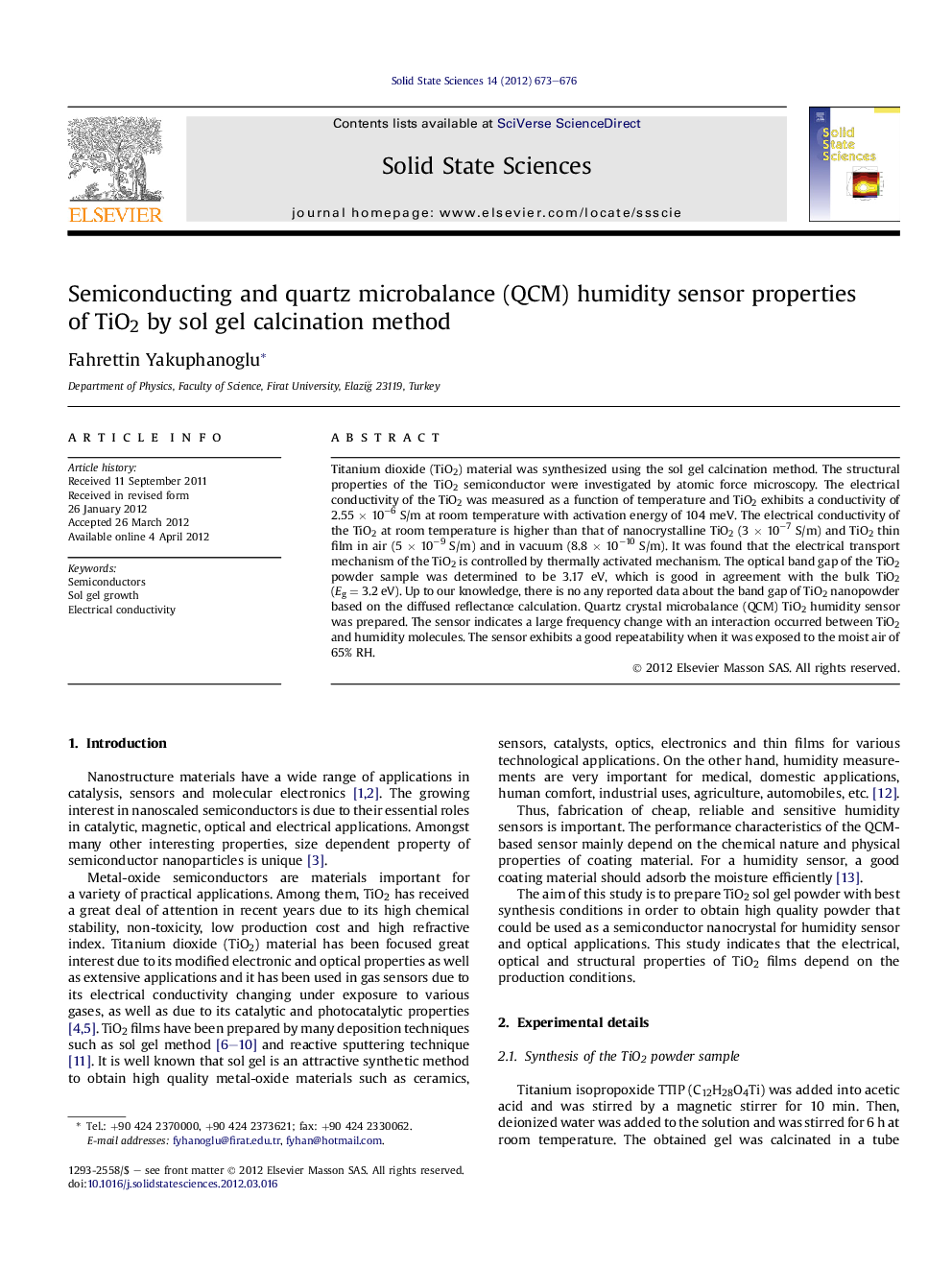| کد مقاله | کد نشریه | سال انتشار | مقاله انگلیسی | نسخه تمام متن |
|---|---|---|---|---|
| 1505239 | 993756 | 2012 | 4 صفحه PDF | دانلود رایگان |

Titanium dioxide (TiO2) material was synthesized using the sol gel calcination method. The structural properties of the TiO2 semiconductor were investigated by atomic force microscopy. The electrical conductivity of the TiO2 was measured as a function of temperature and TiO2 exhibits a conductivity of 2.55 × 10−6 S/m at room temperature with activation energy of 104 meV. The electrical conductivity of the TiO2 at room temperature is higher than that of nanocrystalline TiO2 (3 × 10−7 S/m) and TiO2 thin film in air (5 × 10−9 S/m) and in vacuum (8.8 × 10−10 S/m). It was found that the electrical transport mechanism of the TiO2 is controlled by thermally activated mechanism. The optical band gap of the TiO2 powder sample was determined to be 3.17 eV, which is good in agreement with the bulk TiO2 (Eg = 3.2 eV). Up to our knowledge, there is no any reported data about the band gap of TiO2 nanopowder based on the diffused reflectance calculation. Quartz crystal microbalance (QCM) TiO2 humidity sensor was prepared. The sensor indicates a large frequency change with an interaction occurred between TiO2 and humidity molecules. The sensor exhibits a good repeatability when it was exposed to the moist air of 65% RH.
Figure optionsDownload as PowerPoint slideHighlights
► TiO2 material was synthesized using the sol gel calcination method.
► The conduction mechanism of the TiO2 is a thermally activated mechanism.
► The sensor exhibits a good repeatability for the humidity
Journal: Solid State Sciences - Volume 14, Issue 6, June 2012, Pages 673–676